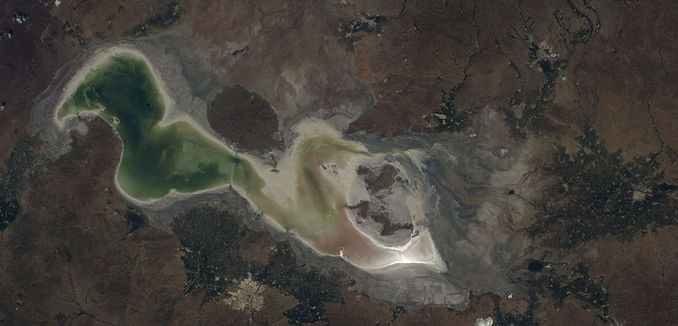Iran is facing “the worst water future of any industrialized nation” due to “bad governance and corruption,” a leading expert on water usage wrote in an op-ed published Tuesday in The Washington Post.
Seth Siegel, author of Let There Be Water: Israel’s Solution for a Water-Starved World, wrote that the result of Friday’s election for president of Iran matters less to the future of the Islamic Republic than its systematic overuse of water that may be leading it to “irreversible path to environmental doom and disruption that owes nothing to sanctions or years of war with its neighbors.”
One of the reasons for this crisis, is the power given to Iran’s Islamic Revolutionary Guard Corps (IRGC), which, through companies it owns, was given control over major engineering projects all over Iran.
The effect of this was devastating:
Recklessly, these companies began damming major rivers, changing the historical water flows of Iran. This was done to give water preferences to powerful landowners and favored ethnic communities while also transferring billions from the public treasury to IRGC leaders’ accounts. In all, since the 1979 revolution, more than 600 dam projects have been completed, contrasted with 13 dams built in Iran prior to the shah’s fall.
As the IRGC grew richer and more powerful, this same military force that today exerts influence in Syria, Yemen and elsewhere silenced farmers and environmentalists who protested river diversions by labeling them counter-revolutionaries, a crime punishable by harsh imprisonment. With its hands on the levers of power and its leaders’ pockets being filled from government accounts for these projects, no one has been able to stop these ventures.
The results of the IRGC’s foray into dam building were aggravated by farmers, who were encouraged to use water, but had no restrictions placed on them to maintain sustainability.
The water crisis in Iran is illustrated by the fate of Lake Urmia in the western part of the country. Lake Urmia, which once covered 2,000 square miles, has shrunken by 90% from 1985 to 2015. The shrinkage of Lake Urmia has contributed to other environmental problems in the region.
This has led to the loss of farmland, prompting farmers and other agricultural workers to leave the countryside for Iran’s overcrowded cities.
Former Iranian agriculture minister Issa Kalantari wrote a report in 2015 predicting that in less than 25 years, 50 million Iranians would be displaced from their current homes as a result of ecological devastation. Iran’s population currently is about 83 million. “Turning 60 percent of the country’s citizens into internal refugees,” Siegel wrote, “would be the cruelest” injustice visited upon the Iranian people by their government.
Instead of addressing the problem, the government continues to authorize “more of the same corruption-based engineering projects,” that will further exacerbate Iran’s growing water crisis.
The winner of Iran’s presidential contest on Friday will be powerless to address this crisis, rather the “supreme leader will have to take on a system created under his less-than-supreme leadership.”
In The Slow Destruction of Iran’s Water Supply, which was published in the March 2017 issue of The Tower Magazine, Nik Kowsar, detailed how Iran’s rulers ruined the country’s water supply and described how he was ostracized and forced to flee for criticizing those policies.
[Photo: NASA / WikiCommons ]




